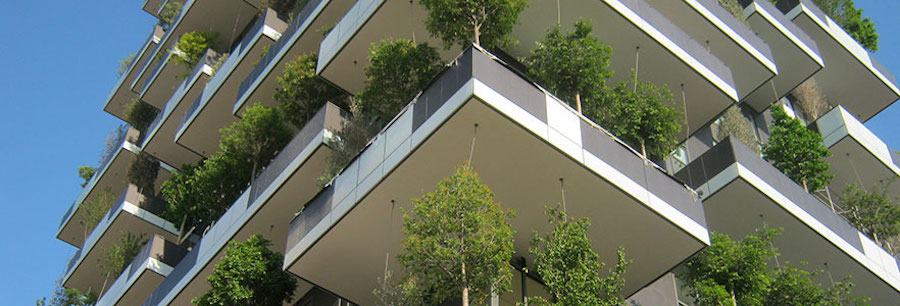
Why are some architects scared to use vegetation at the heart of their façade design? Is it the loss of control implied by adding vegetation to the design? Is this due to a varying emphasis on greenery during architects’ training? Or just that it challenges the defined image of a building? Whatever the specific reasons, it’s still very rare to see vegetation placed at the centre of the design concept, as in the Bosco Verticale (‘Vertical Forest’) apartment buildings in Milan, Italy.
Why isn’t greenery treated as equal to stone or other façade materials? In my opinion it is because often greenery is used to fill gaps or out of respect to the planners, so a green element is added to fix a problem or act as last minute ornamentation.
And when greenery isn’t made central to the conceptual integrity of the design it is an easy target during value engineering to be removed, citing maintenance and cost issues as the reasons. Impacts that can be mitigated when incorporated in the design at an early stage. To a degree this is understandable – when the value is debatable because it is an option rather than part of the concept, justifying managing additional complexity is often low down on people’s priorities. It is too late.
There has also always been this battle for building designers to fight nature rather than invite it in. Perhaps this is another barrier to adoption. Even as the professionals who specify façades we include clauses such as ‘They shall withstand the specified deleterious and degrading effects of vermin, fungi and other growths for the required service life.’ How do we write a specification for green facades? Ok it is all doable but there needs to be a cultural shift both in designers and material providers.
But if experts were involved in greening during the early stages of the design process architects might be encouraged to use greenery more often. It can be better channelled and managed with good design. This collaboration would help make the integration of greenery to a project more significant to the finished design, thereby maximising aesthetic value and the potential ecological benefits.
From our partners:
If architects’ education and training did more to champion the use of greenery in building design, our cities would start to see the benefits in terms of sustainability, liveability, wellbeing and resilience. This would lead to cities that are pleasant to live in with all the knock-on benefits of storm water retention, reduction in the Urban Heat Island effect and absorption of pollution.
How do you think the cultural shift between designers and material providers can be bridged to enable the integration of greenery in a project?
This feature originally appeared in Arup.
















